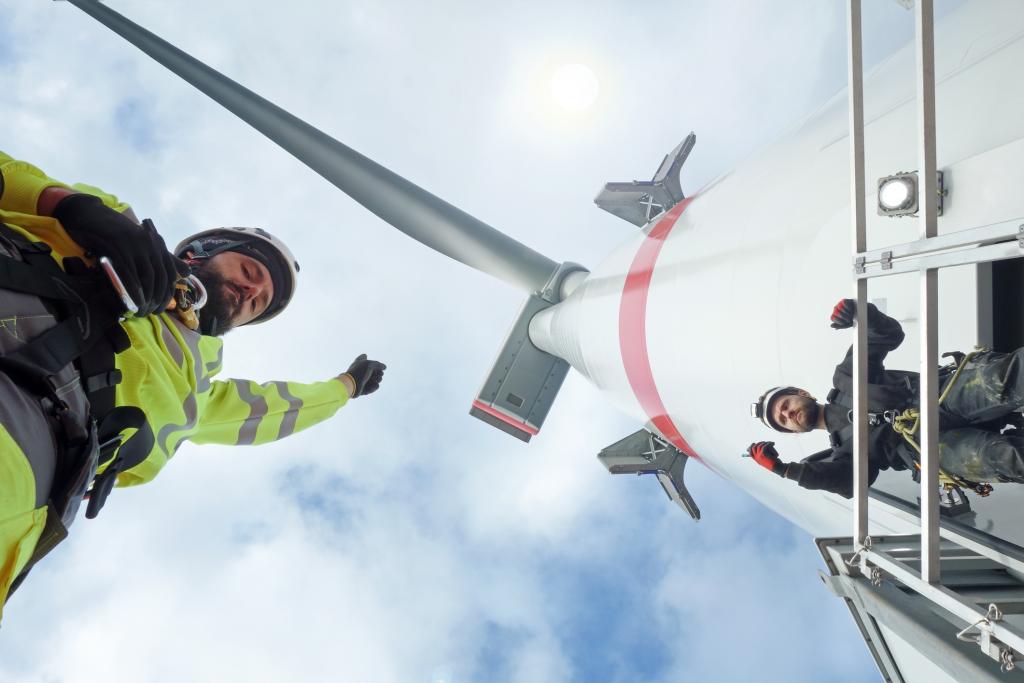Net-Zero: How should governments communicate about it?
The public still has a limited understanding of the concept of net-zero. Effectively communicating what net-zero means and entails should be a primary objective for governments to increase public support for climate policies.
Governments around the world are increasingly committing to achieve net-zero emission targets, the sustainable balance between greenhouse gas emissions and carbon removal. Getting to net-zero means that everyone, including the public and private sectors, agrees to make ambitious efforts to reduce greenhouse gas emissions.
Under Article 6 of the United Nations Framework Convention on Climate Change (UNFCCC), governments have committed to informing their citizens about climate change, but there is still a long way to go to realize this commitment. Most importantly, the public still has a limited understanding of the concept of net-zero. For example, in a March 2020 study done in the United Kingdom, most respondents were unfamiliar with the concept of net-zero, with 64% of respondents saying they had never heard of it. Effectively communicating what net-zero means and entails should be a primary objective for governments to increase public support for climate policies.
So, what exactly do we mean by net-zero?
In short, net-zero refers to the balance between the amount of greenhouse gases produced and the amount removed from the atmosphere. Basically, for every tonne of emissions released into the atmosphere, there is a tonne of emissions removed, for example, being captured by trees or through carbon capture technology. This means there is a net zero release of emissions into the atmosphere. To get to a point where this balance is feasible, we must rapidly reduce overall emissions.
Achieving this balance is imperative in order to address climate change and strive to limit global warming to 1.5°C, as countries committed to in the Paris Agreement. What we, as a society, do over the next decade to limit emissions will be critical for the future.
Which countries have committed to net-zero emissions and are working to engage and communicate with the public?
Over 100 countries have joined an alliance to reach net-zero by mid-century, including major greenhouse gas emitters such as the United Kingdom, Canada, Japan, and South Korea. Many of these countries have also established a series of targets to reach this net-zero goal. Reaching net-zero emissions will require fundamental changes in the functioning of society, which is why it is vital to gain public support and understanding and to mobilize all segments of society.
Countries such as Scotland, Sweden, New Zealand, and the United Kingdom have already implemented tools and strategies to engage society on net-zero. New Zealand is supporting Crown–Māori partnerships as part of its Zero Carbon Amendment Bill to ensure Māori are well represented when climate plans are developed. Similarly, Scotland is engaging the public through its Net-Zero Scotland web portal, which includes raising awareness about net-zero with social groups. What appears crucial in all these instances is the need to involve civil society in a meaningful way.
Yet despite these positive examples, the reality is that few countries have developed robust strategies for citizen engagement and communicating net-zero to the general population.

What best practices can governments follow to communicate effectively and increase public acceptance about net-zero?
There are many excellent examples and guidance that governments can draw on to include the public and help shift attitudes about climate change. Organizations like Climate Outreach, Creative Carbon Scotland, World Resources Institute, and more are doing important work to guide governments on communicating about net-zero. In particular, here are some practical strategies governments should undertake:
Ground net-zero in the here and now
First, it is important to make net-zero tangible and immediate to the public by focusing on the present—the here and now. Governments can do this by communicating in present-focused terms (today, tomorrow) rather than only focusing on future targets. Net-zero discourse needs to have terminology that is familiar and catchy and that people can personally identify with. In addition, it is essential to emphasize that achieving a net-zero goal will be the result of collective work, starting with each one of us, and that its success depends on everyone's participation. A helpful idea is to use inclusive and collective pronouns (such as we, us, etc.) so that people can identify with net-zero and see it as a collective concern.
Focus messages on a small number of tangible actions
To this end, the transparency and immediacy of government goals and actions are essential, as they can build public confidence in policies and generate a sense among the public that achieving objectives is realistic and feasible. For example, governments can highlight recent wins in terms of environmental policies and show the achievements of smaller, intermediate objectives through mechanisms such as annual progress reports.
Governments should establish specific time frames for achieving targets and explain how these are practical and achievable. (Legislation can be key in this regard to entrench and achieve targets: the Energy and Climate Intelligence Unit’s Net Zero Tracker shows that, as of early 2021, the United Kingdom, Sweden, France, Denmark, New Zealand, and Hungary have passed legislation to entrench net-zero targets.)
Governments should establish specific time frames for achieving targets and explain how these are practical and achievable.
Communications about net-zero should also highlight the direct benefits for society, such as lower emissions of pollutant gases, better air quality, well-being, health, production of better-quality food, sustainable economies, and more.
Effective visualization and adapting messaging to specific groups
Communication campaigns should use effective visuals in order to increase public awareness of the role and importance of net-zero-aligned climate action, from the simplest actions to those that require more individual or political commitment. Research suggests that visuals depicting healthy countryside, clean air, and renewable energy infrastructure tend to resonate more with harder-to-convince audiences; as well, photos of "people doing things," such as planting trees or charging electric vehicles tends to see greater engagement.
According to Clean Energy Canada, positive imagery performs better than problem-focused imagery (such as images of environmental damage) and can help address common concerns among the public, such as job creation and air pollution. The implication is that these images can be appealing not only to audiences who might be more hesitant about climate action but also broadly attractive to those who are more supportive. The Climate Visuals website is a great guide for images and it facilitates access to Creative Commons photos.
Governments should also adapt messaging according to subgroups, such as age groups and various political orientations. This can be done in part by identifying trusted messengers for net-zero communication or by using familiar faces to pass on key information in common sense language.
Avoid long, technical descriptions that are far from local realities
Among the things to avoid when communicating about net-zero are long and technical descriptions of policies, concepts, and theoretical and scientific objectives. The public is not likely to spend significant time learning about technical concepts behind political, economic or environmental discourses. Additionally, the less objective and practical the communication strategy, the more likely it is that the public will lose interest. An effective communication strategy on net-zero should avoid an approach that is too focused on international obligations and instead focus on local realities.
When designing and communicating net-zero targets, decision-makers are faced with several options, which may have different outcomes. Although there is still a long way to go, there is a need to engage all members of society if countries are to meet net-zero targets. This can only be done through a good communication strategy, which needs to be adequately resourced and grounded in evidence.
As a concrete next step, for the UNFCCC 26th Conference of the Parties (COP 26), countries should incorporate climate communications objectives into their Nationally Determined Contributions. More effective and inclusive decision making will enable greater support for climate action. Properly engaging society on net-zero and climate action will help protect the commons, foster planetary health, and improve the overall quality of life.
You might also be interested in
Carbon Minefields: Oil and gas exploration surging to pre-Covid levels
Oil and gas exploration is booming despite an agreement at last year’s COP 28 climate summit to transition away from fossil fuels.
July Edition | Carbon Minefields Oil and Gas Exploration Monitor
In June 2024, six governments issued 18 oil and gas exploration licences with embodied emissions of 14.7 MtCO2, led by Russia and China.
New Agreement Marks First Step in Addressing Energy Charter Treaty Legacy
This is an important move to prevent legacy arbitration claims under the treaty, but more remains to be done.
The Indonesia Cooking Diaries Study
This study evaluates the feasibility and implications of switching from cooking with LPG to induction stoves in Indonesian households.
